Monthly Archives: January 2022
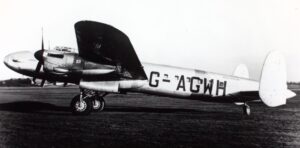 In 1998, two Argentine mountaineers climbing Mount Tupungato, which is about 60 miles west-southwest of Mendoza, and about 50 miles east of Santiago, made a strange discovery emerging from the glacial ice. Upon inspection, the “discovery” turned out to be the wreckage of a Rolls-Royce Merlin aircraft engine, along with twisted pieces of metal and shreds of clothing. It didn’t take long to realize that a plane had crashed here, but when and how did that plane crash at an elevation of 15,000 feet, into the Tupungato Glacier.
In 1998, two Argentine mountaineers climbing Mount Tupungato, which is about 60 miles west-southwest of Mendoza, and about 50 miles east of Santiago, made a strange discovery emerging from the glacial ice. Upon inspection, the “discovery” turned out to be the wreckage of a Rolls-Royce Merlin aircraft engine, along with twisted pieces of metal and shreds of clothing. It didn’t take long to realize that a plane had crashed here, but when and how did that plane crash at an elevation of 15,000 feet, into the Tupungato Glacier.
The find set off an Argentine Army expedition in 2000, during which additional wreckage was found, including a propeller and wheels (one of which had an intact and still inflated tire). The expedition also noted that the wreckage was well localized, which is indicative of a head-on impact with the ground, ruling out a mid-air explosion. In addition to the plane, the expedition found human remains, including three torsos, a foot in an ankle boot, and a manicured hand.
On August 2, 1947, a plane known as the Star Dust, operated by British South American Airlines, took off from Buenos Aires, Argentina, headed for Santiago, Chile. It never made it. After 51 years, the fate of the Star Dust was finally known, but how did it happen? A recovered propeller showed that the engine had been running at  near-cruising speed at the time of the impact. The planes wheels were in a retracted state, meaning that the plane wasn’t coming in for a landing, emergency or planned. This was a controlled flight into terrain, whether planned or unplanned. It was determined that during the final portion of Star Dust’s flight, there would have been heavy clouds blocking the visibility to the ground. It is thought that because of the cloud cover and the resulting absence of visual sightings, that a large navigational error could have been made as the aircraft flew through the jet stream. This would not have been understood in 1947. High-altitude winds can blow at high speed in directions different from those of winds observed at ground level. If the airliner, which had to cross the Andes Mountain Range at 24,000 feet, had entered the jet-stream zone, which in this area normally blows from the west and south-west, resulting in the aircraft encountering a headwind, this would have significantly decreased the aircraft’s ground speed.
near-cruising speed at the time of the impact. The planes wheels were in a retracted state, meaning that the plane wasn’t coming in for a landing, emergency or planned. This was a controlled flight into terrain, whether planned or unplanned. It was determined that during the final portion of Star Dust’s flight, there would have been heavy clouds blocking the visibility to the ground. It is thought that because of the cloud cover and the resulting absence of visual sightings, that a large navigational error could have been made as the aircraft flew through the jet stream. This would not have been understood in 1947. High-altitude winds can blow at high speed in directions different from those of winds observed at ground level. If the airliner, which had to cross the Andes Mountain Range at 24,000 feet, had entered the jet-stream zone, which in this area normally blows from the west and south-west, resulting in the aircraft encountering a headwind, this would have significantly decreased the aircraft’s ground speed.
If the crew thought their airspeed was faster than it actually was, the crew may have deduced that they had already safely crossed the Andes, and so commenced their descent to Santiago, when in reality they were still a considerable distance to the east-north-east and were approaching the cloud-shrouded Tupungato Glacier at high speed. That theory is not well received by some BSAA pilots, who have expressed skepticism. They were convinced that Cook would not have started his descent without a positive indication that he had crossed the 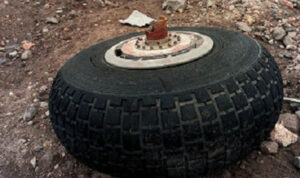 mountains, they have suggested that strong winds may have brought down the craft in some other way. One of the pilots recalled that “we had all been warned not to enter cloud over the mountains as the turbulence and icing posed too great a threat.”
mountains, they have suggested that strong winds may have brought down the craft in some other way. One of the pilots recalled that “we had all been warned not to enter cloud over the mountains as the turbulence and icing posed too great a threat.”
A 2000 Argentine Air Force investigation cleared Captain Cook of any blame, concluding that the crash had resulted from “a heavy snowstorm” and “very cloudy weather,” as a result of which the crew “were unable to correct their positioning.” By 2002, the bodies of five of the eight British victims had been identified through DNA testing.
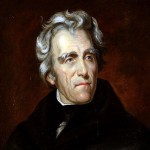
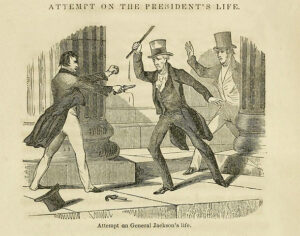 Over the course of American history, several presidents have been assassinated, and several others have survived attempted assassinations. Some were quickly treated, and others were not where the would-be assassin thought they were going to be. Still, Andrew Jackson, the seventh US president better known as “Old Hickory” was, without doubt, the most amazing one. and for good reason, as one would-be assassin found out.
Over the course of American history, several presidents have been assassinated, and several others have survived attempted assassinations. Some were quickly treated, and others were not where the would-be assassin thought they were going to be. Still, Andrew Jackson, the seventh US president better known as “Old Hickory” was, without doubt, the most amazing one. and for good reason, as one would-be assassin found out.
On January 30, 1835, Richard Lawrence came up to the 67-year-old Jackson, as he left a congressional funeral and pulled a pistol on him. I’m sure he thought a 67-year-old man was going to be an easy target, but when he pulled the trigger, the gun misfired. While having his gun misfire was…inconvenient, Lawrence also found out that a 67-year-old man is not necessarily a weak, old man. A furious Jackson began beating the man viciously with his cane in retaliation. Then, while trying to dodge the cane wielded by Jackson, Lawrence managed to pull a second gun from his jacket and pull the trigger. I don’t know how, but Lawrence had to be either the unluckiest assassin, or a totally inept gunman, because the second gun also jammed. By this point, Jackson’s aides were able to wrestle Lawrence away and into custody. Jackson was unharmed. 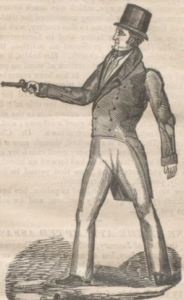
Jackson became convinced that the attempt was made at the behest of his political enemies, even though all evidence pointed to Lawrence being a mentally unstable lone wolf. I rather think I might agree with Jackson on this one, because politics can be a deadly career to get into. Jackson spent the rest of his presidency worried about another attack, while his vice president, Martin Van Buren, started carrying two loaded pistols with him into the Senate.
You can take away any opinion on this matter that you want to, but I have my own. I find it amazing that Jackon had the wherewithal to “pull” his cane on his would-be assassin, but how often to you see two different guns misfire in the commission of the same assassination. I see that situation as nothing but God. Jackson was the recipient of a double miracle. If either of those gun shots would have connected to their mark, he would surely have been dead. This was not a sniper shooter, but rather, a close-range shooter, and would have meant instant death. No, this man was divinely protected, and that’s all there is to it.
 While most people look back on their childhood with fond memories, most of us would say our childhood was probably typical for the era we lived in. Of course, not every childhood is perfect, and some can be absolutely horrible. President Abraham Lincoln was born on February 12, 1890, and spent his childhood years in Kentucky and Indiana. He personally summed up his childhood days on the frontier as “the short and simple annals of the poor.” While that is how Lincoln saw his childhood, he wasn’t the only one in that situation. The hardships he endured there as a child weren’t unique. Frontier life was harsh for most families in the early 1800s. Living and working on the frontier was hard work. In fact, sometimes the people worked as hard as their oxen and horses. According to Lincoln, his earliest memories were of life on the farm in Kentucky where he moved in 1811 with his parents, Thomas and Nancy, and sister, Sarah. She was four years old, and Abraham was two years old. His parents had been married five years.
While most people look back on their childhood with fond memories, most of us would say our childhood was probably typical for the era we lived in. Of course, not every childhood is perfect, and some can be absolutely horrible. President Abraham Lincoln was born on February 12, 1890, and spent his childhood years in Kentucky and Indiana. He personally summed up his childhood days on the frontier as “the short and simple annals of the poor.” While that is how Lincoln saw his childhood, he wasn’t the only one in that situation. The hardships he endured there as a child weren’t unique. Frontier life was harsh for most families in the early 1800s. Living and working on the frontier was hard work. In fact, sometimes the people worked as hard as their oxen and horses. According to Lincoln, his earliest memories were of life on the farm in Kentucky where he moved in 1811 with his parents, Thomas and Nancy, and sister, Sarah. She was four years old, and Abraham was two years old. His parents had been married five years.
At Knob Creek, in Kentucky, the Lincoln family lived in a one-room cabin with a dirt floor. The place was very similar to the place where Lincoln was born a mere nine miles way near Hodgenville. Steep, heavily wooded hills rose on each side of the home. Nevertheless, things were “looking up” on the Knob Creek farm, because while the place was leased, Lincoln’s father planted corn and pumpkins on wide fields with rich soil on the 30-acre farm. From the little dirt-floor cabin on the road from Louisville to Nashville, the Lincoln family watched as the “world passed” by. Pioneers with fully loaded wagons, peddlers, local politicians, slaves, missionaries and soldiers returning from the War of 1812.
Abraham’s dad, Thomas Lincoln, who was stern and often domineering, put his son to work before he turned seven. Of course, if you ask me, seven-year-olds can help out, provided that they aren’t mistreated in the process. Abraham filled the wood box, brought water from the creek, weeded the garden, gathered grapes for wine and jelly, picked persimmons for beer making and planted pumpkin seeds.
Lincoln didn’t have many opportunities to go to school, as was common in those days in rural Kentucky. For the most part he was self-taught. Mostly, he and his sister sporadically attended ABC schools—so-called “blab” schools in which students repeated their teacher’s oral lessons aloud. Usually barefoot, Lincoln walked to the one-room schoolhouse, “a little log room about 15 feet square, with a fireplace at one side.”
Two years later, Abraham’s mother, Nancy Lincoln died in the remote wilderness—the first of Lincoln’s many family tragedies. Nancy was a good mother, and her passing was heartbreaking for the Lincoln children. Apparently, she had consumed milk tainted when cows ate poisonous white snakeroot…although, some believed the cause of death was tuberculosis. She was just 34 years old. Eleven-year-old Sarah now became the woman of the house, and all domestic duties fell to her. The Lincoln children’s lives were worse than ever. That winter, the motherless children and their 19-year-old orphan cousin lived dismally in that place.
It didn’t take Thomas long to decide that he needed a new wife, so Thomas Lincoln traveled to Elizabethtown, Kentucky, where he proposed to widow Sarah Bush Johnston, whom he had known since childhood. She accepted, provided Lincoln paid off her debts. On December 2, 1819, Thomas and Sarah married and later returned to Little Pigeon Creek, accompanied by her three children: Elizabeth, 13; Matilda, 10; and John, 9. Thomas’s new wife brought along furniture (including a walnut bureau valued at $50), cooking utensils and comfortable bedding…astonishing luxuries for her new stepchildren. She also brought several books, including the Bible and Aesop’s Fables, which she gifted to Abe. Things were looking up again in the Lincoln household. At his wife’s insistence, Thomas Lincoln installed a cabin floor and plastered cracks between logs. Instead of cornhusks, Abraham and his sister slept on a feather bed. The cramped conditions were no match for the love Sarah brught with her, and the family thrived. To make him look “more human,” Lincoln’s stepmother dressed up the poorly clad Abraham.
On the farm, Lincoln became skillful with an ax. But Thomas didn’t see the need for the reading his son loved. 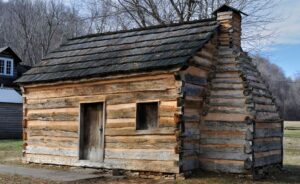 He wanted him to learn carpentry, but Abraham wasn’t interested, and the matter brought tension to the relationship. Sometimes the illiterate Thomas even reprimanded Abraham for reading instead of doing farm chores. Thankfully, Sarah Bush Lincoln persuaded her husband to allow their son to read and study. “At first, he was not easily reconciled to it,” she recalled, “but finally he too seemed willing to encourage him to a certain extent.” The bond between stepmother and stepson grew. Sarah Bush Lincoln recalled years later, “Abe was the best boy I ever saw.” I think we would a have to agree, he was not just a good boy, but a great man and a great president.
He wanted him to learn carpentry, but Abraham wasn’t interested, and the matter brought tension to the relationship. Sometimes the illiterate Thomas even reprimanded Abraham for reading instead of doing farm chores. Thankfully, Sarah Bush Lincoln persuaded her husband to allow their son to read and study. “At first, he was not easily reconciled to it,” she recalled, “but finally he too seemed willing to encourage him to a certain extent.” The bond between stepmother and stepson grew. Sarah Bush Lincoln recalled years later, “Abe was the best boy I ever saw.” I think we would a have to agree, he was not just a good boy, but a great man and a great president.
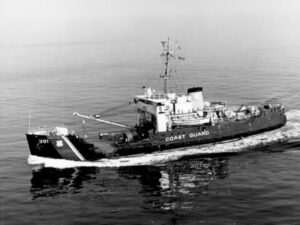 The USCGC Blackthorn (WLB-391) was a 180-foot seagoing buoy tender for the US Coast Guard. A buoy tender is a type of vessel used to maintain and replace navigational buoys. Prior to navigational buoys, ships might run into rocks, small almost submerged islands, or coral reefs. It would be nice if every underwater danger could have a lighthouse, but that just isn’t feasible. Buoys, on the other hand, and markers serve to direct the operator of the water vessels on the safe course to take. They warn the operator of the underlying dangers in the waterways. Navigation buoys and markers are also effective navigation aid in directing the water vessel operator on the best route to use. They aid in determining the safest way through the waters.
The USCGC Blackthorn (WLB-391) was a 180-foot seagoing buoy tender for the US Coast Guard. A buoy tender is a type of vessel used to maintain and replace navigational buoys. Prior to navigational buoys, ships might run into rocks, small almost submerged islands, or coral reefs. It would be nice if every underwater danger could have a lighthouse, but that just isn’t feasible. Buoys, on the other hand, and markers serve to direct the operator of the water vessels on the safe course to take. They warn the operator of the underlying dangers in the waterways. Navigation buoys and markers are also effective navigation aid in directing the water vessel operator on the best route to use. They aid in determining the safest way through the waters.
The Blackthorn was one of 39 original 180-foot seagoing buoy tenders built between 1942-1944. All but one of the original tenders, USCGC Ironwood (WLB-297), were built in Duluth, Minnesota, which makes me wonder if my Uncle Bill Spencer, or his sisters, Laura Fredrick and Ruth Wolfe might have worked on it. Blackthorn’s preliminary design was completed by the United States Lighthouse Service and the final design was produced by Marine Iron and Shipbuilding Corporation in Duluth. On May 21, 1943, the keel was laid, the vessel was launched on July 20, 1943, and commissioned on March 27, 1944. The original cost for the hull and machinery was $876,403.
The Blackthorn was initially assigned to the Great Lakes for ice-breaking duties, but was resigned to San Pedro, California after just a few months. For several years the vessel served in San Pedro and then it was moved to the gulf coast region to serve in Mobile, Alabama. From there it was transferred to Galveston, Texas for the final years of its service until it was involved in an accident.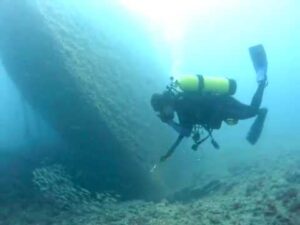
In 1979-1980, Blackthorn underwent a major overhaul in Tampa, Florida. The work was finished and on January 28, 1980, while leaving Tampa Bay after the completion of the overhaul, she collided with the tanker SS Capricorn near the Tampa Bay Sunshine Skyway Bridge. The Blackthorn capsized resulting in the deaths of 23 crew members. The cutter was raised for the investigation, but ultimately, instead of fixing it, Blackthorn was scuttled in the Gulf of Mexico after the investigation was complete. She is currently serving as an artificial reef for recreational diving and fishing.

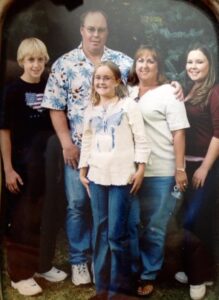 My niece, Lacey Steves in the youngest of the three children of my sister, Alena Stevens and her husband Mike. Maybe because she is the youngest, and maybe because they have similar personalities, but for whatever reason, Lacey and Alena were and still are very close. They are, as her sister, Michelle Miller says, “Two peas in a pod.” Lacey was always a mommy’s girl, and her siblings, Michelle and Garrett never let her live that down. These days, I’m sure it doesn’t bother Lacey one bit, but as a kid, things were different…and yet she couldn’t help the closeness she felt to her mom.
My niece, Lacey Steves in the youngest of the three children of my sister, Alena Stevens and her husband Mike. Maybe because she is the youngest, and maybe because they have similar personalities, but for whatever reason, Lacey and Alena were and still are very close. They are, as her sister, Michelle Miller says, “Two peas in a pod.” Lacey was always a mommy’s girl, and her siblings, Michelle and Garrett never let her live that down. These days, I’m sure it doesn’t bother Lacey one bit, but as a kid, things were different…and yet she couldn’t help the closeness she felt to her mom.
Lacey, being “the baby” got ganged up on by Michelle and Garrett quite a bit…as siblings will do. They didn’t mean anything by it, but sometimes older siblings don’t want to have the “baby” hanging around. One day, Michelle and Garrett were playing in the basement…building a “pillow fort” and Lacey wanted to play too. They didn’t want to let her in, so they started chasing her away. 
 Lacey took off running. She screamed “MOMMY” (like she “always” did, per Michelle) and then under her breath and to herself, she said “get a pillow.” It was such a funny thing to say, and to me…like that little note to herself out loud that she could fight us off with a pillow. I thought maybe it was like her single moment of bravery against her older siblings, but Michelle saw is as “self-preservation.” Lacey’s aunt, Caryl Reed, rather thought that Lacey had decided to take a stand against her siblings, and a pillow was her weapon of choice…at the moment anyway. I suppose that none of us really know what Lacey was thinking at that moment. For all we know she was thinking, “Steal a pillow and the fort will be ruined!!” Whatever the case may be, being the youngest is not for the faint of heart. Time changes all things. As kids grow up, sibling rivalries and those little tiffs melt into the past, as life-long friendships replace the childhood voices. While “Get a Pillow” is a funny story, it has certainly not defined Lacey’s life, except for her closeness to her mom.
Lacey took off running. She screamed “MOMMY” (like she “always” did, per Michelle) and then under her breath and to herself, she said “get a pillow.” It was such a funny thing to say, and to me…like that little note to herself out loud that she could fight us off with a pillow. I thought maybe it was like her single moment of bravery against her older siblings, but Michelle saw is as “self-preservation.” Lacey’s aunt, Caryl Reed, rather thought that Lacey had decided to take a stand against her siblings, and a pillow was her weapon of choice…at the moment anyway. I suppose that none of us really know what Lacey was thinking at that moment. For all we know she was thinking, “Steal a pillow and the fort will be ruined!!” Whatever the case may be, being the youngest is not for the faint of heart. Time changes all things. As kids grow up, sibling rivalries and those little tiffs melt into the past, as life-long friendships replace the childhood voices. While “Get a Pillow” is a funny story, it has certainly not defined Lacey’s life, except for her closeness to her mom.


These days, Lacey is a successful business owner and cosmetologist. In July 2021, Lacey left The Salon at Ulta Beauty, where she had been the manager, and set out on a new venture. She decided to open her own salon, called Luxlou Beauty Salon. When it comes to cosmetics and haircare, Lacey is a true artist. Her salon is located at the La Bottega Gallery Suites in Casper, Wyoming. The first six months of her salon have been amazing. Her clients have followed her to her new salon, because they love her work, and truly wouldn’t trust anyone else with their hair, or makeup for their special events. Not only do her clients trust her, but they depend on her. Lacey has truly come into her own, and we are so proud of her. Today is Lacey’s birthday. Happy birthday Lacey!! Have a great day!! We love you!!

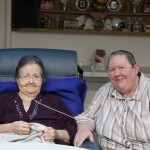 My husband’s aunt, Margaret “Margee” Kountz is the youngest and only surviving aunts on his mom’s side of the family. Margee has two kids, Dan and Sandy, and five grandchildren (one…Brian Kountz lives in Heaven now), as well as five great grandchildren. Margee has always been a very hands-on grandmother, helping her kids with the care and transport of her grandchildren many times over the years. These days, with so many parents working, grandparents have taken on the role of “keeper of the village” that it takes to raise a child.
My husband’s aunt, Margaret “Margee” Kountz is the youngest and only surviving aunts on his mom’s side of the family. Margee has two kids, Dan and Sandy, and five grandchildren (one…Brian Kountz lives in Heaven now), as well as five great grandchildren. Margee has always been a very hands-on grandmother, helping her kids with the care and transport of her grandchildren many times over the years. These days, with so many parents working, grandparents have taken on the role of “keeper of the village” that it takes to raise a child.
Of course, Margee worked all those years too, but she still managed her time in such a way that she could be there when she was needed to help out with her grandchildren. As a hands-on grandma myself, I can relate to just what a treasure those precious grandchildren are. I just wish, like I’m sure Margee does, that those years hadn’t gone by so fast. These days, all of her grandchildren are grown up, and several have children of their own.
Margee is retired now and doing well. She has begun to explore new things, like Facebook…something she probably never would have done had it not been for her granddaughter, Staci, who kept showing her things that she thought would interest her, and finally got her hooked. I was surprised. I didn’t think she would ever 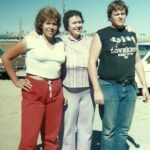
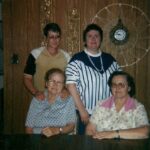 get on the computer, much less, Facebook. She doesn’t always talk much on there, but I know she likes to look around. It is interesting, I must admit.
get on the computer, much less, Facebook. She doesn’t always talk much on there, but I know she likes to look around. It is interesting, I must admit.
These days, Margee likes being at home and enjoying her free time. She also loves having the great grandchildren come over for visits. They say that we should have the grandchildren first, and maybe they are right, but the great grandchildren are pretty special too. Today is Margee’s 73rd birthday. Happy birthday Margee!! Have a great day!! We love you!!
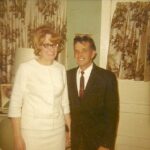 My husband’s uncle, Bobby Cole was born in South Dakota, where he lived for all of his young life. I don’t know all the details of how he met my husband’s aunt, Linda “Knox” Cole, except that they met in Colstrip, Montana, when her parents were living there. It is my thought that Bobby was working at the coal mine in Colstrip, when a certain girl caught his eye. Once he met Linda, he was smitten. He knew she was the love of his life, and he was right. They were married on December 29th, 1965, and their marriage would last until Bobby’s passing on May 30, 2014. Of course, I don’t know these details for sure, except that my husband, Bob Schulenberg told me that they met in Colstrip. I also know that Colstrip is a coal mining town…or at least a coal
My husband’s uncle, Bobby Cole was born in South Dakota, where he lived for all of his young life. I don’t know all the details of how he met my husband’s aunt, Linda “Knox” Cole, except that they met in Colstrip, Montana, when her parents were living there. It is my thought that Bobby was working at the coal mine in Colstrip, when a certain girl caught his eye. Once he met Linda, he was smitten. He knew she was the love of his life, and he was right. They were married on December 29th, 1965, and their marriage would last until Bobby’s passing on May 30, 2014. Of course, I don’t know these details for sure, except that my husband, Bob Schulenberg told me that they met in Colstrip. I also know that Colstrip is a coal mining town…or at least a coal 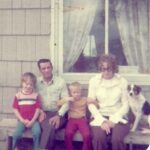 processing town. So, it made sense that mining and coal was the reason Bobby was there. And in the end, it was fate, I guess…or a really good move.
processing town. So, it made sense that mining and coal was the reason Bobby was there. And in the end, it was fate, I guess…or a really good move.
Bobby was raised on his parents’ farm, so the country lifestyle was in his blood, but like many kids, the idea of a change of pace can be very appealing…not to mention getting away from home. Kids, once they graduate from high school tend to either want to move out and get a job or head off to college. For Bobby, the choice was to move to Colstrip, Montana was the best decision he ever made. Once Linda and Bobby met, they never looked back. The dated a while, and then went to Las Vegas, 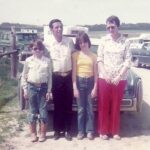 Nevada to get married. Following their wedding, Linda and Bobby would go on to have two children…a daughter, Sheila and a son, Patrick. Since that time, their lives were blessed with multiple grandchildren. While they passed away at a younger age, they lived a good life.
Nevada to get married. Following their wedding, Linda and Bobby would go on to have two children…a daughter, Sheila and a son, Patrick. Since that time, their lives were blessed with multiple grandchildren. While they passed away at a younger age, they lived a good life.
Eventually, life would take Linda and Bobby in an unexpected direction. After the hotel they owned in Kennebec, South Dakota, burned to the ground, they decided that since Kennebec was a small town and business was going nowhere, it was time to leave. They moved to Winnemucca, Nevada, and lived there the rest of their lives. Today would have been Bobby’s 79th birthday. Happy birthday in Heaven, Bobby. We love and miss you very much.
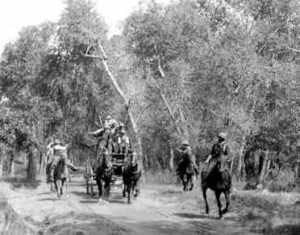 I can imagine a number of nicknames a stagecoach driver might want to have, one that no one would want to have. George Green was one of the most popular stagecoach drivers in the Sierra Mountain Range, driving for the Pioneer Stage Company between Placerville, California and Virginia City, Nevada in the 1860s. George had the nickname “Baldy” because of the sparse amount of hair he had on the top of his head. It was not the nickname “Baldy” that George would learn to hate, however. George was known for his good looks, standing about six feet tall with a large full mustache, but it was not his good looks or large mustache that earned him the nickname he hated either.
I can imagine a number of nicknames a stagecoach driver might want to have, one that no one would want to have. George Green was one of the most popular stagecoach drivers in the Sierra Mountain Range, driving for the Pioneer Stage Company between Placerville, California and Virginia City, Nevada in the 1860s. George had the nickname “Baldy” because of the sparse amount of hair he had on the top of his head. It was not the nickname “Baldy” that George would learn to hate, however. George was known for his good looks, standing about six feet tall with a large full mustache, but it was not his good looks or large mustache that earned him the nickname he hated either.
During his days as a stagecoach driver, Green drove many famous people including Ben Holladay, Horace Greeley, and Vice-President Schuyler Colfax. Nevertheless, Green was apparently not a very scary driver. On May 22, 1865, near Silver City, Nevada, three men robbed his stage of $10,000 in gold and greenbacks. I guess word must have gotten around, because more robberies followed that first one, and not only would the robbers not leave him alone, but the robberies were big news and the stories sold lots of newspapers. The Territorial Enterprise commented that Green had narrowly escaped scalping, and someone placed a sign near the robbery location saying, “Wells-Fargo Distributing Office, Baldy Green, Mgr.”
Green just couldn’t catch a break. Two years later his stage was robbed twice on successive days, and following another robbery on June 10, 1868, Virginia City’s Territorial Enterprise stated: “Baldy Green is exceedingly unlucky, as the road agents appear to have singled him out as their special man to halt and plunder, and they always come at him with shotguns.” Two more robberies occurred the same month, and you might say that the 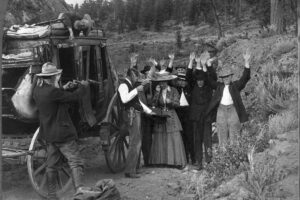 writing was on the wall. No one came right out an accused Green of being involved, but it had come to the point that they couldn’t take the risk of keeping him on anymore. Green was fired. Whether he was guilty or not, he was the driver most likely to be robbed. While he was never given that nickname, it is rather a fitting one.
writing was on the wall. No one came right out an accused Green of being involved, but it had come to the point that they couldn’t take the risk of keeping him on anymore. Green was fired. Whether he was guilty or not, he was the driver most likely to be robbed. While he was never given that nickname, it is rather a fitting one.
Green didn’t let that stop him, however. He then went to hauling freight in Pioche, Nevada. I guess either he figured out how to stop the robberies, or freight haulers were less likely to be robbed. Either way, he managed to have more success in that trade that the stagecoach career. Later on, he even served as Justice of the Peace in Humboldt County, Nevada.
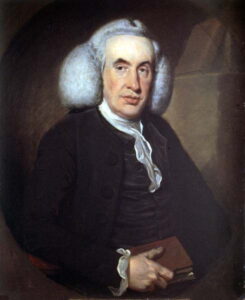 Most people, these days, don’t necessarily know who William Cullen is, but historically speaking, he is a very important man. Born April 15, 1710, in Hamilton, Lanarkshire, the son of William Cullen…a lawyer and Elizabeth Roberton of Whistlebury. Cullen was a Scottish physician, chemist and agriculturalist, as well as a professor at the Edinburgh Medical School, but these things would not be the defining accomplishment of his life. Cullen saw a need for something, that many people knew they needed, but no one knew how to get it.
Most people, these days, don’t necessarily know who William Cullen is, but historically speaking, he is a very important man. Born April 15, 1710, in Hamilton, Lanarkshire, the son of William Cullen…a lawyer and Elizabeth Roberton of Whistlebury. Cullen was a Scottish physician, chemist and agriculturalist, as well as a professor at the Edinburgh Medical School, but these things would not be the defining accomplishment of his life. Cullen saw a need for something, that many people knew they needed, but no one knew how to get it.
Years ago, towns had an icehouse. Snow and ice were stored in a cellar in an effort to keep them frozen for use by the townspeople. Then the icehouse owner would bring ice to people, and it would basically be kept in a “cooler” so food could be kept cold for a while. It was an imperfect system, but it was all they had. Cullen could see that something better was needed. I’m sure he saw the diseases that came from spoiled food and maybe even deaths from that food. That got him thinking.
After Cullen completed his education at the University of Glasgow and the University of Edinburgh, he started his formal career. His field of study and subsequent career in medicine and after completing the studies, he started in that career, but he was also interested in working on a scientific basis to invent different things. That was when Cullen envisioned and then invented an artificial refrigerator which was used manually to save many things from getting wasted.
These days, the refrigerator is an appliance which can be found in almost every house, and it is one of the most used appliances. It comes in different shapes and in different sizes. Normally, it is made up in “the form of two compartments and one of them is insulated thermally, while the other compartment consists of a heat pump and its important function is the transfer of heat. This transfer is done to manage heat environment.” I don’t presume to understand how all that works. I just know that my food stays the temperature it needs to be to either freeze it of just keep it cold.
In 1741 he married Anne (or Anna) Johnstone, who died 1786. He was father to Robert Cullen and Henry Cullen, who became a physician. Cullen’s eldest son Robert became a Scottish judge in 1796 under the title of Lord Cullen, and later Baron Cullen, and was known for his powers of mimicry. Cullen died in Edinburgh, Scotland on February 5, 1790. He was almost 80 years of age at the time of his death.


